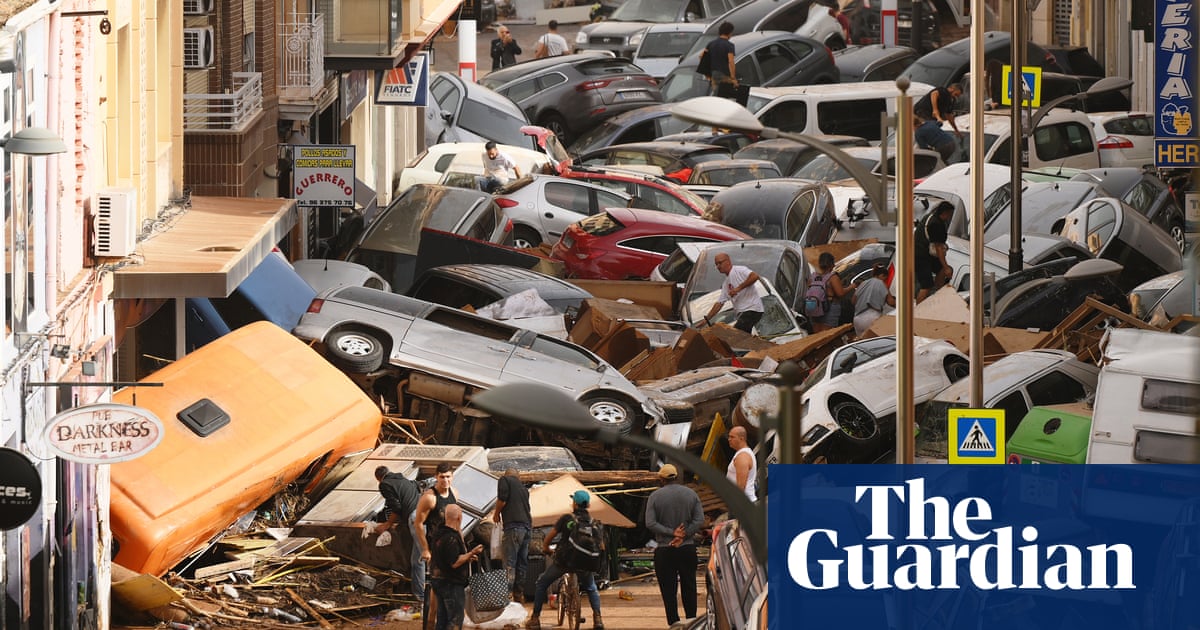At least 140 people have died in Spain after torrential rains triggered the country’s deadliest floods in decades, unleashing a deluge of muddy water that turned village streets into rivers, destroyed homes and swept away bridges, railways tracks and cars.
An unknown number of people remain missing, while thousands of others are without electricity or phone service. The majority of those killed were in the coastal region of Valencia, where the state-run agency said that nearly a year’s worth of rain had fallen in just eight hours.
Deaths were also reported in the Castilla-La Mancha region and in Andalucía’s Málaga province.
This before and after slider shows the dramatic change to the landscape south of Valencia:
In the worst affected areas more than 400 litres of rain per square metre fell on Tuesday. Rubén del Campo, a spokesman for Spain’s meteorological agency, told El País: “A relatively strong storm, a powerful downpour, like those we see falling in spring or summer, can be 40 or 50 litres per square metre. This practically multiplies it by 10.”
The intense rain was attributed to a phenomenon known as the gota fría, or “cold drop”, which occurs when cold air moves over the warm waters of the Mediterranean Sea. This creates atmospheric instability as the warm, moist air rising rapidly to form towering, dense clouds capable of dumping heavy rain.
The clouds can remain over the same area for hours, multiplying their destructive potential and, as seen in Spain this week, unleashing fierce hailstorms and tornadoes alongside rain.
In recent years, scientists have warned that the waters of the Mediterranean are rapidly warming, climbing as much as 5C above normal. As hot air can hold more moisture, the potential for catastrophic downpours rises.
“No doubt about it, these explosive downpours were intensified by climate change,” said Dr Friederike Otto, leader of world weather attribution at the Centre for Environmental Policy, Imperial College London.
As Spain begins three days of national mourning and rescuers scramble to comb the devastated areas, questions have swirled as to why the alert warning people to stay in their homes was sent out only after the flooding had begun.
The state weather agency, AEMET, launched a red alert for the Valencia region on Tuesday morning, keeping it active as conditions deteriorated throughout the day.
But it took until after 8pm for the civil protection service to send an alert urging residents not to leave home.
One man told news site Eldiario.es that the alert came as he was already trapped in his car with floodwaters up to his chest. “Just after 8pm, after an hour with water up to my neck and swallowing mud, the alert went off,” he said.







